
Climbing equipment can be difficult to manage and keep track of sometimes. In this article, I talk about crag packs to help you decide if you need one!
So, what is a crag pack? A crag pack is a backpack that’s designed specifically for carrying climbing gear to and from climbing locations. Crag packs are often comfortable, spacious, and designed with climbing equipment in mind.
In climbing, a crag is an area where lots of climbs start within close proximity of each other (for example, the base of a cliff that has 5-10 routes on it). Climbers will often do several routes at a given crag; to carry their gear for climbing those routes, they’ll use a crag pack. Crag packs are designed to carry climbing equipment comfortably, and they often have several other built-in features that help them perform their specific purpose.
Features of a Crag Bag
A crag bag differentiates itself from a normal backpack by having certain features that help it perform its tasks better. To understand what these features are, it’s important to first know what climbers usually need from their bags.
When I’m cragging, I want a bag that can:
- Store all of my gear: You need a lot of equipment to climb, so enough space is essential
- Fit comfortably for long approaches: No one wants to be sore before they even get to the crag
- Is easy to open so that I can pull stuff out and put stuff in: When I’m climbing, I often only need some pieces of gear. Having a bag that allows me to unzip it fully, so that I can pull certain items out without needing to unpack everything, is a lifesaver.
- Is simple to pack and can be carried easily around the crag: Often when switching between climbs, I need to carry all of my gear for short distances (say, 50 feet). When this happens, I don’t want to have to pack up the entire bag; instead, I want to just messily toss everything in, grab it, and throw it back down a couple of minutes later.
Essentially, I need something that will fit all of my gear, help me to carry it comfortably, and will allow me to pack/unpack it easily and often. A normal, top-loading backpack (like a standard hiking bag) won’t do this as well; instead, the special features of a crag bag can be a lifesaver.
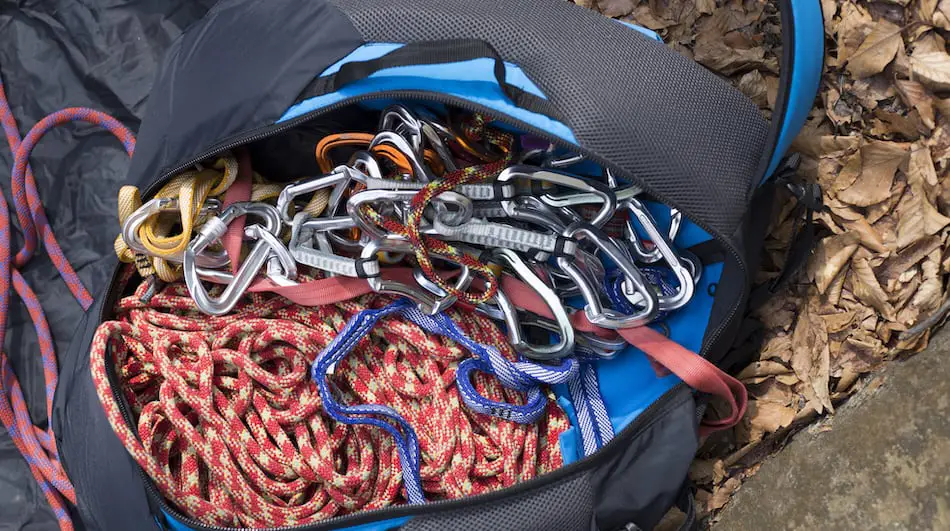
Some of these features include:
- Haul Loops: Pieces of fabric or webbing on the outside of the bag that allow you to strap ropes/gear to them. These help if you’re short on space
- Panel Loading: Often, the entire front panel of these bags will zip away and fold out like a suitcase, allowing you full access to all of your gear.
- Extra carry handles: The backpacks will be designed with duffel-like handles for carrying short distances.
- Climbing-specific gear: Some packs will have rope tarps, helmet pockets, or other climbing-related gear built in.
These features, while not essential, really help the crag bag make your day easier when you’re out climbing.
Crag Bag vs Other Backpacks
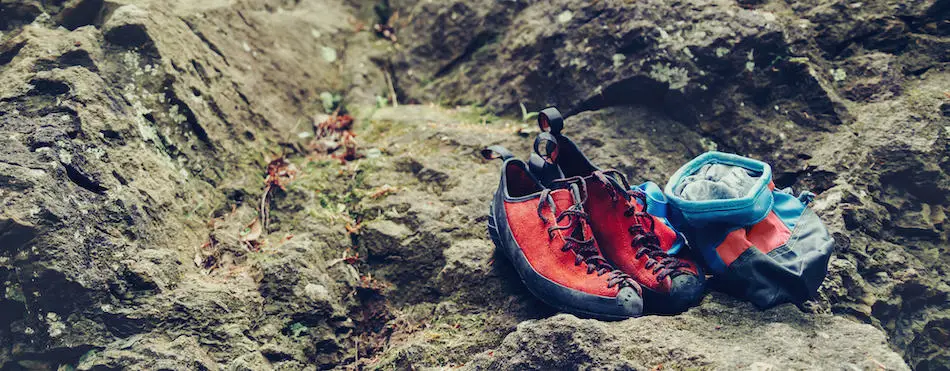
How does a crag bag differ itself from other backpacks? For this article, I’ll compare it to two types of bags that are commonly used to substitute for it: hiking bags and alpine bags.
Hiking Pack
Hiking packs (which also includes day packs and backpacking packs) are designed to help you carry equipment like clothes, food, and water over long distances. The basic structure of them is really similar to a crag pack, as they often have hip-belts and will be made out of durable fabric.
The differences are often in the specific designs and the features added. Because they’re made for wearing, not for carrying gear, hiking backpacks place more of an emphasis on comfort (such as breathable panels and padded straps) and less emphasis on accessibility. They most likely won’t have the same front access as a crag pack, which means that packing and unpacking them is a lot harder.
If you don’t have a crag pack, most people just use a hiking pack to haul their gear; this is what I did for the first 3 years of my outdoor climbing career. It’ll work just fine although you’re going to have to spend mor time sorting through your gear and constantly unpacking/repacking it.
Alpine Pack
An alpine or multipitch pack is a lightweight, streamlined bag designed to carry the essentials with you when you’re on long climbing routes. Because of this, they’re often stripped-down versions of a hiking packs with a few climbing-specific features built in, like gear loops or rope straps.
These features mean that alpine packs can work decently well as a crag pack, but they’re often a lot smaller (usually no larger than thirty litres) and won’t have the same accessibility. They also usually aren’t as comfortable as a standard hiking or crag bag to wear for long approaches, because they’re designed to be lightweight.
Do I need a Crag Bag?
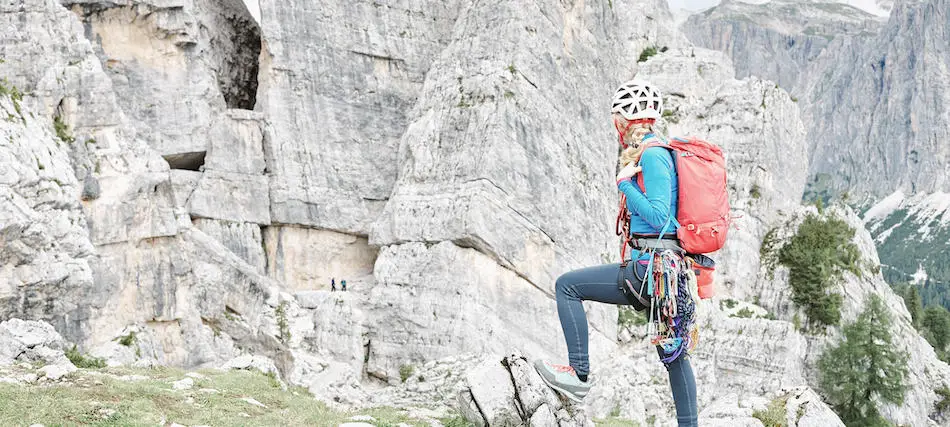
This is a question that a lot of new climber’s face. So, do you need to crag bag? No, you don’t need a crag bag, although they can make the experience more enjoyable. A hiking bag is a perfectly good substitute.
If you’re just getting into the sport, or you want to save some money, you definitely don’t need a crag bag in order to go climbing. Almost any other type of backpack will work, as long as it’s large enough to hold all of your gear and comfortable enough to wear on the approach.
Like I said, for the first several years when I learned to outdoor rock climb, I just used either my hiking pack or my backpacking pack.
With that being said, as you start doing it more and more, crag packs can make a surprising difference in how comfortable and easy your life will be. So, while I wouldn’t say that they’re essential, they’re also not a waste of money; a good crag pack will last you for years and make your climbing days more enjoyable.
The Best Crag Bag on the Market
So, if you make the choice that you want a crag bag, what are some of the best ones on the market? I spend a lot of time shopping climbing gear, and I’ve narrowed it down into three bags that you should consider buying: one clear winner, one runner up, and one budget option if you’re trying to save money.
The Clear Winner: Mountain Hardwear Crag Wagon 60L
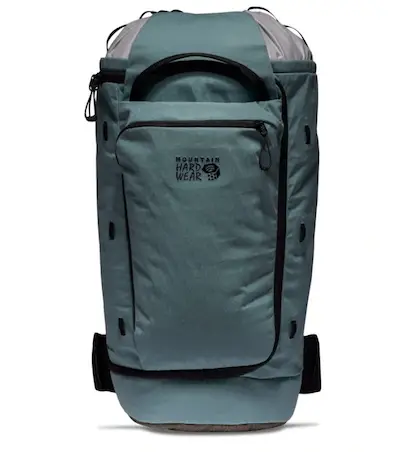
A few years ago, when faced with declining sales and an ugly financial situation, Mountain Hardwear decided they needed to go back to their roots. They stopped listening to market analysts and instead just gave their designers a simple directive: build the gear that you want to make your life better.
The Crag Wagon was one of the first pieces of gear to come from that change in directives, and it was a roaring success. Designed by climbers, for climbers, this bag has all of the features that you could want in your crag pack: it comes with front-zipper access, removable hop belts, internal gear loops, a specific pouch for your guide book, a removable rope tarp, grab handles for easily moving it around the crag, and a storm flap for protecting any external gear.
Essentially, this bag has every single feature you could want in a crag bag. It’s insanely well thought-out and well designed, and there’s currently nothing on the market that can out-perform it. If you want a smaller option it also comes in a 45-litre sizing, but I would say go bigger and never have to worry about being short of space.
Runner Up: The Patagonia Cragsmith 45L
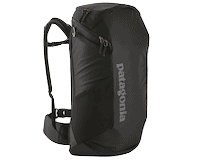
If you decide for some reason that the Crag Wagon isn’t your cup of tea, I would direct you towards another good option in the Patagonia Cragsmith. Similarly designed with back-panel access, internal gear loops, and comfortable straps for carrying.
The Cragsmith will serve you well as a crag pack, and Patagonia is a good company to support. However, it doesn’t have quite as many features as the Crag Wagon does, and it’s only $30 less; if you’re looking to invest in a good bag, it’s hard for me to find a reason you would get this one instead of the Mountain Hardwear
Best Budget Option: The Black Diamond Stone Duffel 42L
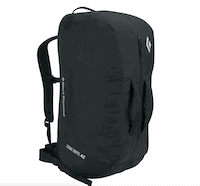
If you want to save money, the Black Diamond Stone Duffel is an affordable option that does everything you need a crag pack to do. It has front access for easy loading, carry handles, internal gear loops, and a build-in rope tarp to boot.
This is actually the pack that I use, and I can say that it does its job pretty well. It’s not the most comfortable bag to carry, and it’s on the smaller end of crag bags (I actually had a rope strap sewn on to make carrying everything easier).
Considering it costs a third of what the Crag Wagon does, though, it’s still worth taking a look at: I’ve found that it’s easier to use for cragging than my hiking backpack was, and it’s a good-quality duffel that I’ve also used for travel and gym climbing.
